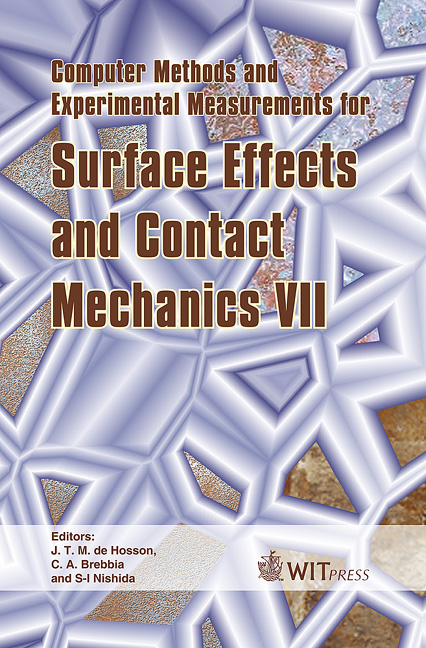Laser Surface Treatment Of Grey Cast Iron For Automotive Applications
Price
Free (open access)
Transaction
Volume
49
Pages
10
Published
2005
Size
4,309 kb
Paper DOI
10.2495/SECM050221
Copyright
WIT Press
Author(s)
V. Ocelík, P. N. Tang, M. C. de Boer, U. O. B. de Oliveira & J. Th. M. De Hosson
Abstract
The surface of pearlitic grey cast iron was treated using a 2 kW Nd:YAG laser beam with the final aim to improve its surface properties, mainly for automotive applications. Two kinds of laser surface treatments were experimentally applied. In the laser surface hardening approach the surface of cast iron was hardened simply by passing a laser beam at travel speeds 1-50 mm/s keeping the surface temperature constant in the irradiated area. Detailed structural analysis of the layer modified by the laser treatment was performed by optical and scanning electron microscopy, EDS and orientation imaging microscopy with the electron back scattered diffraction and microhardness profiles were measured. Conclusions concerning the mechanism and kinetics of pearlite–austenite transformation during the laser surface hardening were drawn. The size of the transformed zone was calculated using a three dimensional model for a Gaussian beam distribution in accordance with direct observations of laser beam energy densities. In the laser surface cladding experiments a thick Co-based alloy coating was created on the cast iron surface using so-called side-cladding set-up when the powder of additional material is locally molten together with a small amount of substrate and then rapidly solidified creating a coating with the metallurgical bond to the substrate. A gradual change of a single processing parameter was used for an appropriate experimental analysis and statistical correlation study between main processing parameters and geometrical characteristics of an individual laser track. Keywords: grey cast iron, laser surface hardening, laser cladding.
Keywords
grey cast iron, laser surface hardening, laser cladding.





